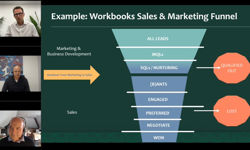Ten years ago, Reader’s Digest had an ABC figure of 1,445,964. Its most recent figure was 638,693 - a decline of 55%. If that rate of decline were to continue, there would be no magazine at all in twenty of so years, and since, says Victoria, "the magazine has traditionally been the door opener to the rest of the company’s products", there probably wouldn’t be a Reader’s Digest Association either.
Part of a publisher’s job is to accentuate the positive, and Victoria maintains that "we are probably at about the right circulation level now", perhaps being careful not to attach specific circulation objectives to the relaunch. In fact, she continues, the company is a lot more profitable now than ten years ago, having made a business decision to focus marketing spend on the high margin book / CD set sales rather than marginal profit subscriptions. (One recent book, Extraordinary Uses for Ordinary Things, sold 180,000 copies in the UK at £24.99.) As a result, whilst subscriber renewal rates have remained strong, subscriber acquisition has fallen away.
The invisible mag
An, albeit deliberate, reduction in acquisition activity is one reason for the gradual decline, but it is not the only one. Reader’s Digest might be a household name, but it suffers from extremely low visibility. Many people struggle to recall when they last saw a copy. Sarah describes how, when approaching some of the new writers she’s recruited for the title, a common initial reaction was "gosh, of course I know Reader’s Digest, but is it still around?" If pressed, most of us might vaguely recollect seeing a well-thumbed copy in a waiting room somewhere or other. One of the title’s greatest strengths, its predominantly subs based circulation, is also its Achilles heel. Whatever your reservations about the newsstand, it is a terrific shop window.
About a year ago, says Victoria, the company came to the conclusion that "dramatic developments were needed with the brand" and new blood was required to see the changes through. Since then, an experienced marketer, Chris Spratling (previously circulation and marketing director at Future), has been appointed managing director, and a big hitting editor, Sarah Sands (previous editor of the Sunday Telegraph and consulting editor at the Daily Mail), has taken over as editor-in-chief with a mission to breathe new life into the magazine. To complete the team, Simon Nicoll was appointed to the newly created post of retail and trade manager, tasked with boosting the title’s newsstand presence.
Lacking confidence
So, editorially, what can be wrong with a title with an actively purchased figure just shy of 600,000, and that sits at number 6 in the top 50 consumer titles after the last ABC? According to Sarah Sands, the title was suffering from a lack of confidence, and "if there was one thing that working at the Daily Mail taught me, was that confidence in your own identity is everything." Sarah, herself, has no doubt about the title’s identity, which she sums up as, "fundamentally wonderful, wonderful story telling; stories about all our journeys; articles of enduring interest and value. Self-improvement and learning are key strands and there should be humour." She is also very clear about who the title is aimed at – families; not oldies, not youngies, but cross generational. One thing she would love to develop is grandparents buying gift subscriptions for their grandchildren!
The title, continued Sarah, seemed uncomfortable in its own skin. The compact size, rather than being celebrated, was seen as a constraint and there was a temptation to cram too much onto the page. Photography tended to be bland and safe, particularly on the covers, which too often seemed to feature "pictures of women eating". Cover images lacked impact, and Sarah is determined to go for bolder, cleaner covers, where they don’t "have to be eating". Previous attempts at modernisation were piecemeal and tinkering: too many exclamation marks, too much use of emoticons (@,:)!!!) and a lack of clear structure. Old favourites had been rebranded for no real purpose other than to make them sound more modern (‘Laughter is the best medicine’ became ‘Laugh!:)’, ‘Readers Letters’ became ‘React’ – both sections will be reverting to their original names.) It’s not that Sarah is trying to turn the clock back. Far from it – it’s more a question of recognising what’s strong about the magazine, and providing a clear framework so that changes, when made, fit a pattern.
Editorial changes
Modernity is very much part of Sarah’s programme. In-house art director Martin Colyer has been asked to make the title look more clean and modern. The big thing he has to do, says Sarah, is to "examine the strength of the small canvass." "We can do great photography," she continues, "and small can most definitely be beautiful – just look at the iPod. We are a small magazine with a grand horizon."
So, I ask, a relaunch has presumably meant lots of research, focus groups, expensive consultants? Err, no. It was done internally. Sarah clearly prefers to go with gut instinct rather than wait on market research; "I hate the way it absolves you from any responsibility. You have to take responsibility and take decisions." She had recently heard a presentation by Brent Hoberman, and, she recalled, the gist of it was that if change were left to market research, then you would be waiting years...
The new look will be unveiled in the October issue. The magazine will have three clearly defined sections (Education & Fun, the features and the ‘Good Life’). The core of the magazine, the features, will go back to what the title is best known for – good stories – and away from issue based articles (which newspapers are better placed to handle). The other two sections will be peppered with regular celebrity contributors, although Sarah is quick to point out that "we are not chasing celebrity for the sake of it; they have to have a real Reader’s Digest sensibility." So you will have Marco Pierre White and Nigella Lawson (on food), Will Lyons (wine), AN Wilson (books), Stephen Fry (quiz) and others. It’s an impressive line-up, and having someone of Sarah’s profile editing the magazine will have made the recruitment of star names a good deal easier.
Sarah and Victoria are clearly itching to get the new look magazine out. But will anyone notice it when it’s out? Subscribers should! A heavy duty PR campaign will ensure lots of column inches in the nationals during September, so certainly anyone with a passing interest in the media will hear about it. But what about everyone else – all the people the Reader’s Digest needs to start marketing to to stem the circulation decline?
Beefing up the newsstand
It is ironic that, at a time when most consumer publishers are chasing subs, Reader’s Digest is chasing newsstand sales. No, they’re not abandoning subs ("we’d be mad to"), but, as Victoria says, "visibility is always an issue when 90% of your circulation goes direct." In the past, Reader’s Digest had sought to plug the visibility gap with a highly proactive approach to PR, but obviously more needs to be done.
They have long had a token newsstand presence (accounting for about 3% of total circulation), but no concerted strategy existed to grow newsstand sales. With the arrival of Chris Spratling and Simon Nicoll, that is set to change, and Victoria said that an approximate 80:20 subs / newsstand split is the goal. Part of the strategy is to use the field sales force of their newsstand distributor, Advantage, to place branded parasite units in-store. Its size clearly lends itself to this type of approach, and Victoria is worried that the title gets lost on the main shelves; not because of its size but because its "unique" editorial proposition means that it doesn’t sit comfortably in newsagents’ planograms. They don’t know where to put it!
A parasite unit in every news outlet would do nicely. Of particular interest are news outlets in areas where families tend to congregate – supermarkets are good, as would be the on-site shops at places like Center Parcs. And it’s not just the traditional newsstand – they are also trialling distribution via niche and specialist outlets like National Trust shops and garden centres. All that is, of course, paid-for distribution, which will run alongside the longstanding controlled circulation to doctors, dentists and vets to place in their waiting rooms.
So, will it all work? Relaunching a primarily subs based title is not quite as heart-stopping as relaunching a newsstand title when sales of a relaunch issue start at zero. The new-look Reader’s Digest has already in effect pre-sold 600 thousand copies, which is a cushion of sorts. Also, the direct relationship the magazine has with its readership means that it’s quite easy to assess reader reaction. That’s not to say there isn’t a lot at stake, because there is. There is only so many times you can relaunch before readers and advertisers start to tire. They need to get it right.
As for me, I’m really quite tempted to pop into my local newsagent and buy a copy myself. Who knows, I might even buy my wife a sub for Christmas, although, being a dentist, she should probably get if for free ...
FEATURE
Relaunching the Digest
Brand recognition is a wonderful thing for a magazine to have. Vogue has it, the Economist has it, Reader’s Digest has it. In fact, Reader’s Digest’s standing goes beyond brand recognition; it’s really something of an institution. Why, then, would such a well-known name need a relaunch? James Evelegh met with publisher Victoria Scott and new editor-in-chief Sarah Sands to find out.










